The Essential Plumbing Tools & Equipment Every Plumber Should Have

As with mostly every trade out there, there are many tools to the trade of plumbing. In order to complete your next job correctly and without hassle, make sure to read this entire article which covers everything from, the history of plumbing, the essential plumbing tools & equipment every plumber should have, and even to where to buy them new and used.

A Brief History of Plumbing:
The Babylonian Water System: In ancient Babylon, water led from separated bathrooms which featured high-seated latrines (Biblical toilets) connected a covered septic tank. Their water system was not only used for respectably expelling waste, but also used to irrigate one of the seven wonders of the Ancient World: The Hanging Gardens.
Copper Pipes: Early systems of pipes were typically made of baked clay, straw or bamboo. However, the Egyptians surpassed every material before it with copper which provided water for both the living—and the dead. Archaeologists have discovered that Egyptian coppersmiths created an elaborate system of pipes within the pyramids which would lead to the room of the pharaoh, where his tomb would be bathed long after his death.
Lead Pipes: The Romans accelerated plumbing in a big way with their large system of water channels that extended throughout the empire called aqueducts. The aqueducts served as a gigantic system made of lead pipe waterways which efficiently carried away wastewater, irrigated crops and provided water to the city’s public baths and bathrooms. The Romans are notably the founders of plumbing; in fact, the Latin word Plumbum translates to “Lead,” which also provides meaning why Pb symbolizes Lead on the Periodic Table of Elements. Little did the Romans know, but lead would eventually poison the water supply and arguably cause the fall of the Empire.
PVC Pipes: The switch from metals to plastic pipes was not a change due to modernization, but one of necessity—wartime. In WW2 the use of metals such as steel, iron and copper were to be used, so the plumbing industry (and many others) were forced to look for new material to work with and so PVC, a synthetic plastic polymer became a mainstay in pipe material.
The Modern-Day Plunger: The exact inventor of the plunger is truly not known to this day; no patent exists! Historians suggest that this piece of Fundamental plumbing equipment could have been created by American Jeffrey E. Gunderson in 1932, while others suggest that an Englishman by the name of Samuel Prosser invented it in 1777, although this year predates the time of flushable toilets.
The Adjustable Wrench: One of the most essential plumbing tools, a plumber simply could not do his job without an adjustable wrench, so thankfully Swede Johann Petter Johansson (JP) invented the “plumber wrench” in 1891. He is also credited for the creation of another plumbing tool: the adjustable spanner wrench.
The Auger: Whether you’re a DIY plumber or a seasoned vet, we can thank Samuel Blanc for his invention of the drain auger. The plumbing world has been able to unclog drains easily and efficiently for nearly 100 years thanks to this lifesaver which he invented in 1933 (inspired by a clog which he discovered in his son’s apartment).
The Hacksaw: Used for cutting through most pipe materials and various hardware, the inventor(s) of the hacksaw is lost in history. However, it was Richard and George Clemson (two brothers) who introduced the durable and type of blades that plumbers rely on to do handle pipework.
Tubing Cutter: As experienced plumbers know, the hacksaw has its limitations, especially when it comes to copper pipe. Thankfully, Stephen D. Garton from Isleworth, Middlesex saw this need and introduced to the world his single size pipe cutter, the “Pipeslice”—what would be the groundwork for what we have in our toolbox today.
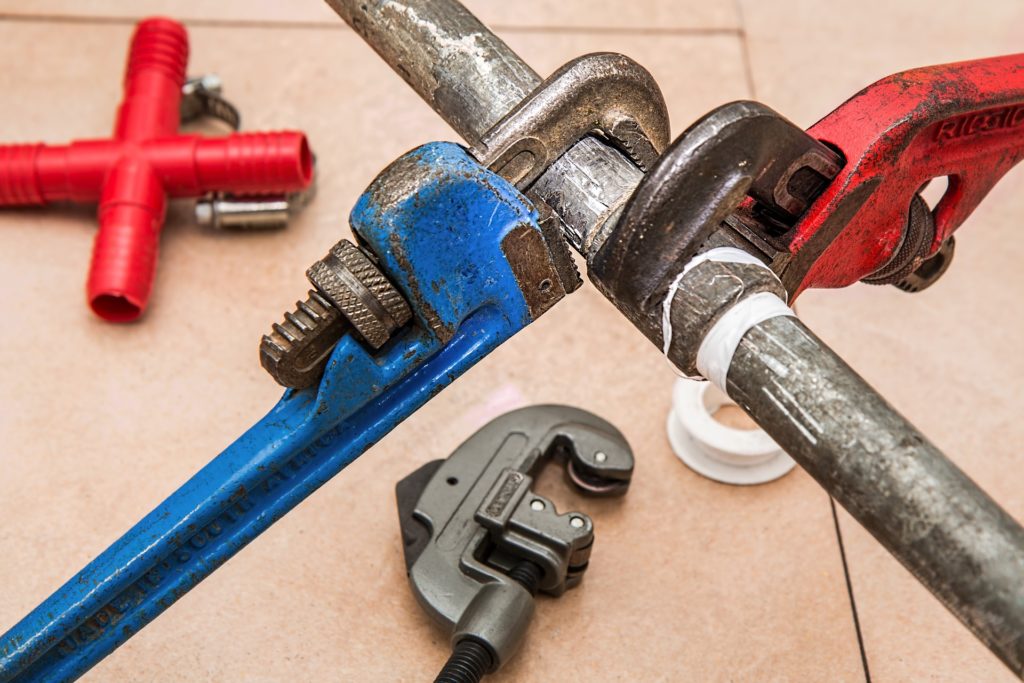
What are the Main Plumbing Tools & Equipment?
Safety First! A good plumber is always a safe one.
A plumber’s job can be dangerous and therefore essential personal protective equipment (PPE) is required. The basics include:
1. Safety Goggles: Always protect your eyes—you need them to get the job done.
2. Long Sleeves and Gloves: On the job, a plumber will likely encounter many cut hazards (jagged screws, sharp edges on freshly cut pipe). Gloves and limiting skin exposure as much as possible will also protect against contact with mold, waste and potentially hazardous material.
3. Footwear: On the job, wear something that is slip-resistant and steel-toed. You don’t want to be reminded of this after you have dropped a sink wrench on your foot.
Tools for the Job:
1. Wrenches: Adjustable Pipe Wrench, Adjustable Spanner, Allen Wrench, Basin Wrench Faucet-Valve Seat Wrench, Torque Wrench.
2. Flange Plunger & Cup Plunger.
3. Pliers: Needle-Nosed, Tongue and Groove Pliers (your Channellocks).
4. Cutters: Hacksaw, Tubecutter
5. Augers (Snakes): Hand Auger, Drum (Canister) Auger, Toilet (or Closet) Auger.
5. Consumables: Plumber’s tape (Flexicon tape), Thread Sealing Tape, Washers, Bolts, Screws, O-rings (other hardware), Sandpaper, etc. (More on these below)
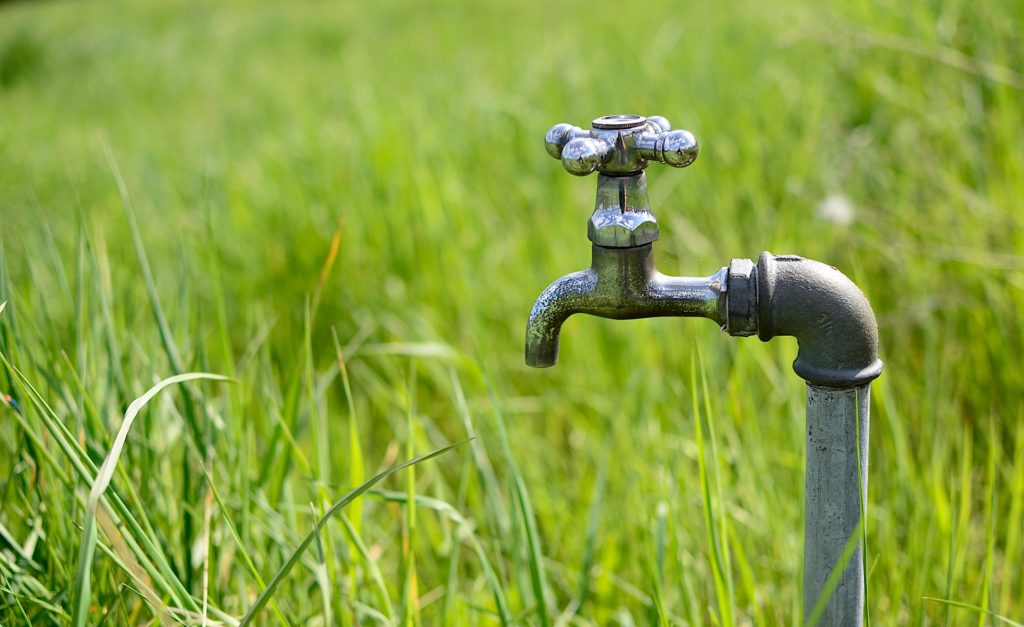
What Plumbing Equipment Do I Need?
Whether you’re just beginning your apprenticeship, or are an established master plumber, a handful of fundamental plumbing equipment will be required for success. The 7 most essential of these tools and the very basics needed to tackle most plumbing jobs are here:
1. Plunger ($10-30)
This comes as no surprise, but the plunger to a plumber is the paintbrush to Da Vinci. Heavy duty flange plungers (toilet plungers) and cup plungers are the best friends of plumbers when a clog is encountered from toilets (flange plungers only), tubs, floor drains or sinks (cup plungers only). They function just like the ones you have at home, but with a lot more suction to clear the common clog.
2. Slip-joint Pliers ($15-25)
Known in the plumbing world as “Channellock pliers” (the brand-name), this tool offers a wide range of adjustments and has specialized angled jaws and long handles which are called upon for all types of jobs; perhaps when needing to firmly grasp, pull, twist or hold heavy steel pipe or to gently tighten large plastic nuts on sink drains.
3. Adjustable Wrench ($15-25)
Typically referred to as a “Crescent wrench” (another brand name), this tool is used for removing fixture shutoff valves, compression fittings and supply lines on faucets and other fixtures that have hexagonal nuts. Its smooth jaws ensure that chrome surfaces will not be damaged.
4. Basin (Sink) Wrench ($10-20)
A basin wrench is essential to a plumber due it its unique ability to tighten and loosen nuts that hold sink faucets in place. It is a self-tightening wrench with a swiveling jaws and a long shaft which provides the ability for loosening or tightening fittings in very narrow spaces, notably the area behind a sink.
5. Drain Auger (Snake) ($20-40)
The drain snake is the ultimate essential plumbing tool a plumber uses when clearing clogs. Especially deep ones. The tool features a long coiled-metal cable that feeds typically from a circular drum or an angled handle that is extended into a drain to reach a clog and extract it. Depending on where the clog is, a plumber will use a sink auger, or toilet (closet) auger for instance.
6. Hacksaw ($15-25)
In everyone plumber’s toolbox you’ll be sure to find one of his most versatile tools: the hacksaw. Hacksaws can cut through a variety of hardware: nuts, bolts and even screws. A plumber can also use a hacksaw to cut through plastic pipe and most metal pipe. Be sure to carry back up blades, they can wear down quick!
7. Tubing Cutter ($15-20)
More often than not, a plumber will encounter copper piping, and that is when this quintessential tool will come in handy. When dealing with copper, precise and clean square cuts are required, and this tool provides just that. There are tubing cutters available for PEX tubing and PVC plastic, but this tool is the first thing a plumber looks for when confronted with the task of needing to cut copper pipe, since a hacksaw just won’t cut it (get it?).
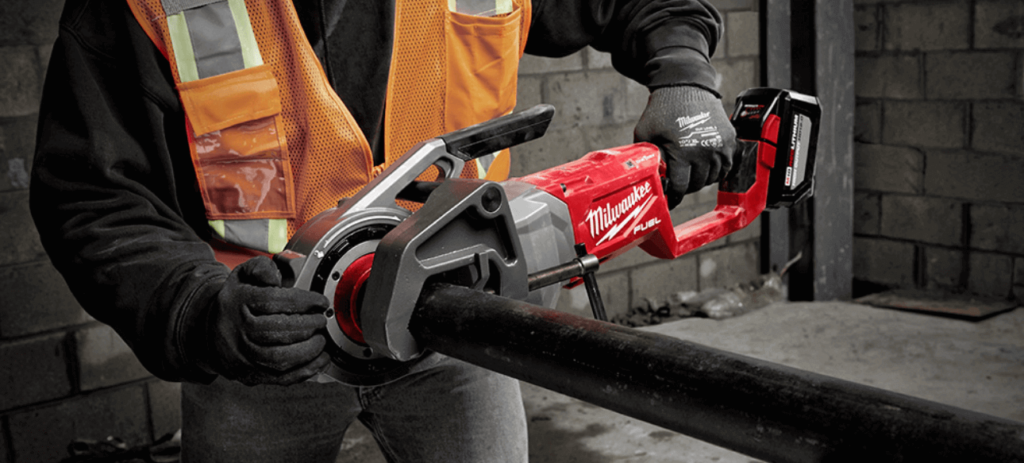
How Much Does Plumbing Gear Cost?
Now that you now know the essential tools you need to tackle most plumbing challenges and daily occurrences for professionals, you need to buy them! Below are the average consumer costs for the essential tools listed above. (refer to cost in parentheses above); Disclaimer: plumber tools come in three different grades: Professional, Intermediate and Consumer. A Professional graded tool is preferred by well, professional and will always offer the best quality, but the largest price tag.

Who Makes The Best Plumbing Tools?
In the plumbing industry, there many companies that provide the things you need to complete the job, however these brands are regarded by professionals to be the go-to due to their reputation and quality:

How to Organize Plumbing Accessories?
In the plumbing business, organization is very important—not only could it mean an efficient job well-done, a fast response to a dire emergency like a pipe break, but also may prevent you from ordering tools, parts and supplies you don’t really need. Here are 5 tips to help you keep your essential plumbing tools organized:
1. Segregation: From my experience, this is number one. Multiple toolboxes or tool bags should be used to separate tools based on the task/project they help complete. Designate one toolbox for piping supplies, and another for fixture hardware for instance. This goes for the Do-It-Yourself handyman and the master plumber with 25+ years of experience.
2. Store in Original Cases: This might sound simple, but do not store your tools away from its factory case (if it comes in one). There is no better way to lose your tools than to store them in a miscellaneous toolbox, a shelf, or god-forbid a bucket. If you purchase a plumbing kit, make sure everything is in order before storing it.
3. Toolboxes/Toolbags: Rather than storing hardware, supplies and tools in a tool bag or bucket, invest in one or several toolboxes. Remember: toolboxes are only as organized as their owner.
4. Systainers: Typically, these are designated for those who take their tools seriously since they cost a pretty penny. Many professionals prefer these types of toolboxes because they can be stacked on top of one another or clipped together to maximize storage space.
5. A Vehicle: For those looking to make a career out of plumbing especially, a transportation vehicle is a strong option for ensuring organization. A plumbing vehicle will naturally keep a plumber from facing the inevitable disorganization of his toolbox and provides plenty of space for all the essentials. When shopping for a vehicle, prioritize plenty of cargo space and look for a vehicle that can be easily modified to fit all your needs.

What Toolboxes are Good for Plumbing Tools?
Basic Toolboxes: To properly store your essential plumbing tools, the most expensive option in the world isn’t necessary. Any good quality toolboxes should fit most needs for the average DIY plumber. For example: Stanley Plastic Portable Toolbox ($25)
Bucket Boss 6500: This is a great way to store a variety of wrenches, pliers and other plumbing tools. Its design allows for easy access and a handle for quick transport.
Veto Pro Pac: Considered to be one of the best tool bags around, the Veta Pro Pack provides easy access and vertical organization of your tools. Typically designed for heavy duty work but a good option for any homeowner.
Bosch L-Boxx System: Stackable tool storage system complete with 3 expandable drawers which ensures easy transport to a job site. Stackability helps maximize storage space and promotes better organization of your tools.
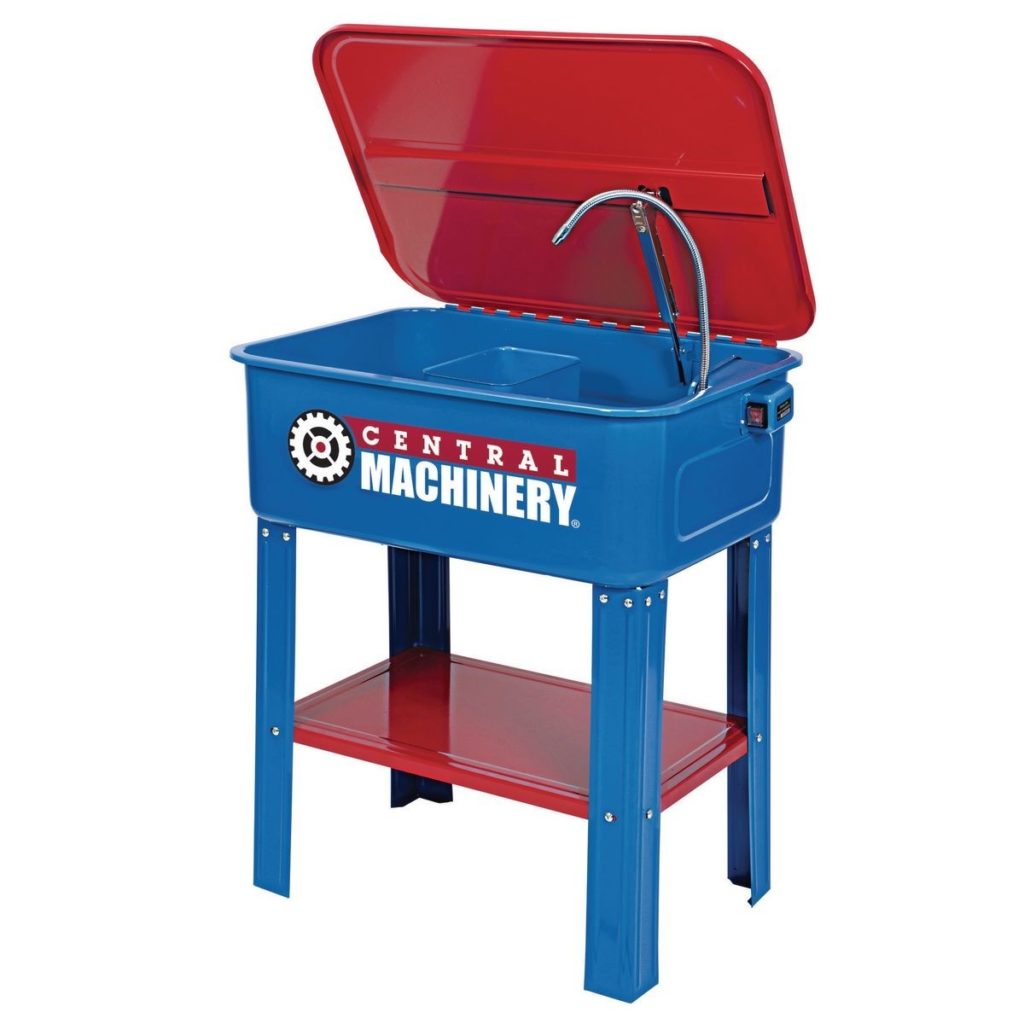
How to Maintain Plumbing Tools?
Proper Storage: Keep your tools in an enclosed space away from other tools—if not, a plumber runs the risks of his tools bashing into each and causing damage to them. Ideally, you want to keep them in separate compartments completely.
Clean After Every Use: In general tools will only need to be wiped down with a soft rag after use, but if they get dirty on the job, soak in a bowl of soap and let air-dry. If you have access to a parts washer you can save yourself tremendous time and effort by cleaning your tools in them. Don’t forget to apply a lubricant as needed to improve the life of your tools overtime. Remember: your tools are your investments!
Security: Unfortunately, many know that a good collection of plumbing tools is a sure-fire way to make money (illegally), and as a result many plumbing vehicles are common targets for thieves. Maintain the safety of your hard-earned tools and the essence of your livelihood by installing security cameras or a tracker, (if you have a plumbing vehicle) and durable locks or very heavy-duty padlocks on your toolbox to deter the dishonest.
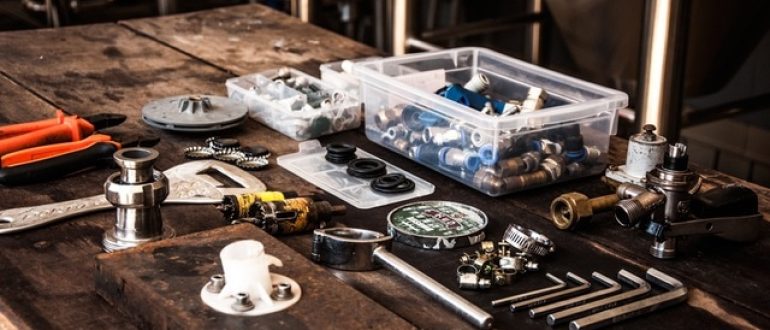
Where to Buy New & Used Plumbing Tools?
Fundamental plumbing equipment is readily available at most big box home improvement and hardware stores found around the country. We have also included a few places to purchase used plumbing tools if you are on a budget. The following list of places offers a great selection of what you need to complete your next plumbing project:

Where to Rent Plumbing Tools?
The purchase of your tools are a huge investment. We’ve seen just how much they can cost you and so often times it is wise to “try before you buy.” Here are a few places where various plumbing tools can be rented, and even bought if you like them!

Wrapping up:
Simply put, plumbing is hard work and always has since the Roman days. We hope this information truly helped you learn about the essential plumbing tools and equipment needed to do the job right. If you would rather just hire someone to complete your plumbing repair then consider calling the #1 plumber in Delray beach, Your 1 Plumber FL
